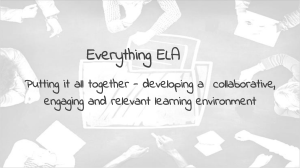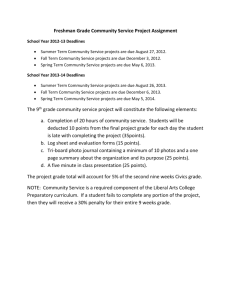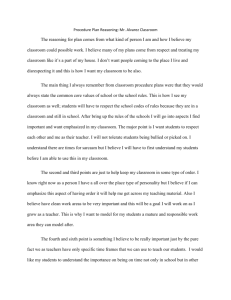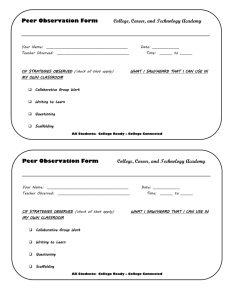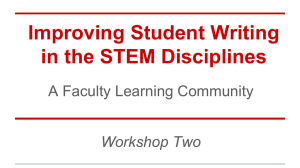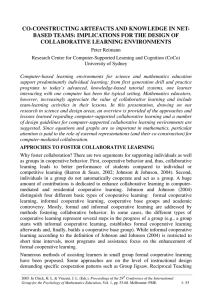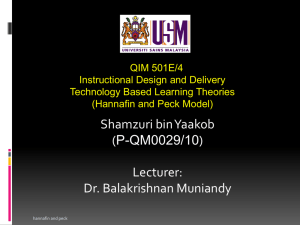document - Swinburne Online
advertisement
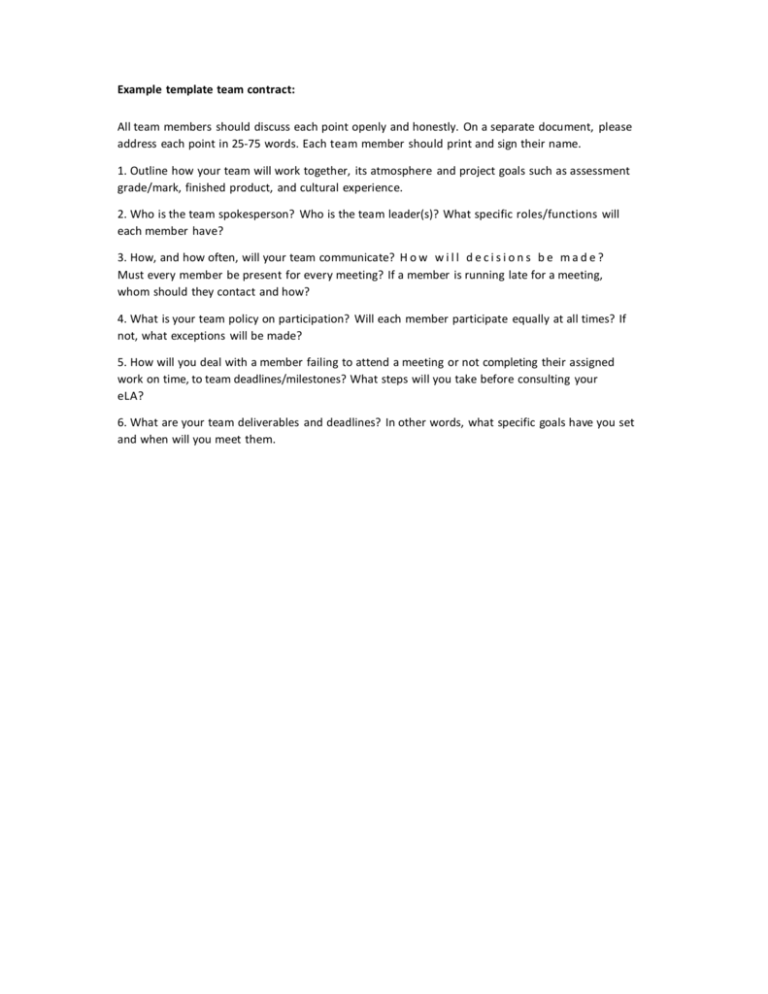
Example template team contract: All team members should discuss each point openly and honestly. On a separate document, please address each point in 25-75 words. Each team member should print and sign their name. 1. Outline how your team will work together, its atmosphere and project goals such as assessment grade/mark, finished product, and cultural experience. 2. Who is the team spokesperson? Who is the team leader(s)? What specific roles/functions will each member have? 3. How, and how often, will your team communicate? H o w w i l l d e c i s i o n s b e m a d e ? Must every member be present for every meeting? If a member is running late for a meeting, whom should they contact and how? 4. What is your team policy on participation? Will each member participate equally at all times? If not, what exceptions will be made? 5. How will you deal with a member failing to attend a meeting or not completing their assigned work on time, to team deadlines/milestones? What steps will you take before consulting your eLA? 6. What are your team deliverables and deadlines? In other words, what specific goals have you set and when will you meet them. Collaboration technology – Wiki, Google Docs, blogs, Adobe Connect / VSee, e-mail and SMS information References Abrams, Z. (2005). Asynchronous CMC, collaboration and the development of critical thinking in a graduate seminar in applied linguistics. Canadian Journal of Learning and Technology, 31(2), 23−47. Soon, L., & Campbell, F. (2011). Facilitating online student group work assignments. In Communication Software and Networks (ICCSN) (Vol. 263–267). Capdeferro, N. & Romero, M. (2012). Are Online Learners Frustrated with Collaborative Learning Experiences?. The International Review of Research in Open and Distance Learning, 13(2), 26-44 Curtis, D.D. & Lawson M. J. (2001). Exploring Collaborative Learning. Journal of Asynchronous Learning Networks, 5(1), 21-34 Oncu, S. & Cakir, H. (2011). Research in Online Learning Environments: Priorities and Methodologies, Computers & Education, 57(1), 1098-1108 Macdonald, J. (2003). Assessing Online Collaborative Learning: Process and Product, Computers & Education, 40(4), 377-391 Shih, M., Feng, J., & Tsai, C. C. (2008). Research and trends in the field of e-learning from 2001 to 2005: A content analysis of cognitive studies in selected journals. Computers & Education, 51(2), 955-967. Belland, B.R., ChanMin, K., & Hannafin, M.J. (2013). A Framework for Designing Scaffolds That Improve Motivation and Cognition, Educational Psychologist, 48(4), 243-270 Redmond, P., & Lock, J.V. (2006). A flexible framework for online collaborative learning. Internet and Higher Education, 52(9), 267-276 Goold, A., Craig, A., & Coldwell, J. (2008). The student experience of working in teams online. Ascilite 2008 Melbourne. Ideas for HRM20011 OB 2A team presentation individual presentation within the team (understanding, share ideas), peer mark (0-5%) Scaffolding: How to give feedback 2B individual report (25%) team report Beef up report? (higher cognitive challenge flow), e.g. report to HR manager of Diary Engineering how to avoid such situations in the future. Word limit: 3,000-4,000 words? Scaffolding - 1) 2) - Explanation / Motivation group work Video Marty “stats” seek Support guidelines with suggestions Synchronous meetings (suggest technology – Skype, FB groups) Group contract (template) o Atmosphere / culture / goals / technology used o Roles o Decision making o Milestones / deliverables o Group members failing deadlines / not submitting in times 3) 4) Schedule meetings with eLA Critical comments via personalized e-mails and not in public to avoid misunderstandings Peer review Evidence process re unequal distribution of group mark


